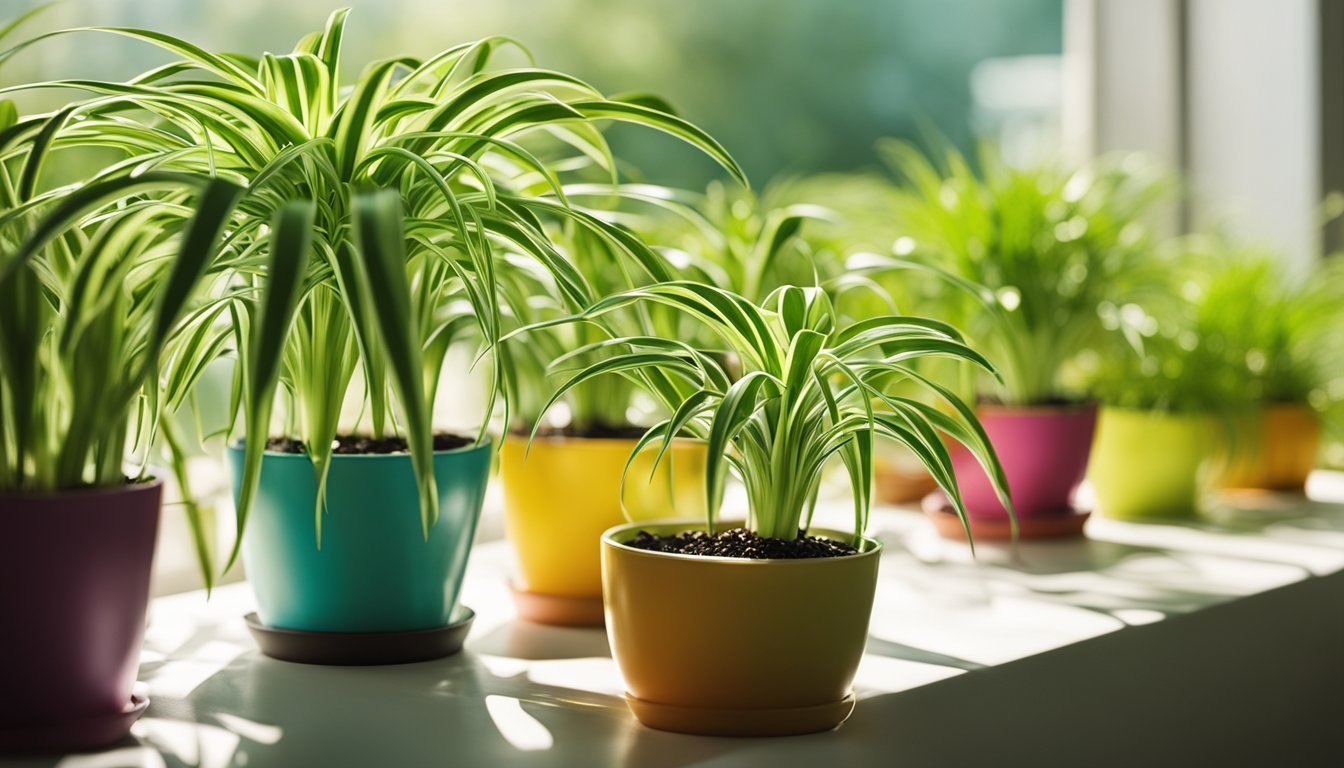
Caring for a spider plant is not only easy but also incredibly rewarding.
Known scientifically as Chlorophytum comosum, the spider plant brings joy to houseplant lovers for its attractive appearance and robust nature.
As a member of the asparagus family, it’s particularly suited for those just starting their plant journey.
These plants bounce back readily from neglect, and they’re safe companions for both cats and dogs.
How Often Should You Water?
Plant expert Matt Ramos points out that spider plants are quite easygoing when it comes to watering, yet they truly flourish with a consistent schedule.
He advocates for checking the soil moisture regularly; ideally, you should wait until the top inch of soil feels dry before adding more water.
When this top layer is dry to the touch, it’s time to hydrate your plant.
Ensure you water deeply, but avoid letting your spider plant sit in excess water, which can be detrimental.
Ramos typically continues watering until he sees a bit of it draining from the pot’s bottom, then he stops.
In line with this, horticulturist Juliet Howe suggests that once-a-week watering is standard, though this can fluctuate based on your plant’s surroundings.
If your spider plant enjoys a bright, warm spot, it may need more frequent watering than one that’s placed in a cooler or shadier location.
Don’t fret if you miss a watering; a minor delay isn’t likely to harm your plant.
Choosing the Right Soil
The foundation of a healthy spider plant lies in its soil.
These plants thrive best in a loamy mix—a harmonious blend of sand, silt, and clay.
Most store-bought indoor potting soils will suffice, as long as they allow for proper drainage and root movement.
If you’re interested in creating your own soil mix, Ramos suggests combining two parts standard potting soil with one part perlite or coarse sand to optimize drainage and prevent waterlogged roots.
Spider plants flourish in indirect sunlight and prefer a cozy temperature range of 65 to 85 degrees Fahrenheit.
However, be careful with direct sunlight, as it can scorch the leaves, resulting in brown tips or spots—especially during harsh conditions.
If you place your plant by a window, try to limit direct sun exposure.
While spider plants can tolerate low light, too little light will slow their growth.
Conversely, providing adequate brightness enhances the vibrant white stripes that characterize this plant.
Picking the Right Pot
When selecting a pot for your spider plant, Ramos advises choosing one that is one or two inches wider in diameter than the existing root ball.
A container that’s too large could retain excess moisture, increasing the risk of root rot.
A snug fit generally works best, considering that spider plants have shallow root systems that can become top-heavy.
Opting for a shallow planter can help maintain balance and stability for your plant.
By following these comprehensive watering guidelines, you’ll help ensure your spider plant remains healthy and vibrant for years to come.
Enjoy the journey of nurturing this delightful green companion!
Source: Marthastewart.com

